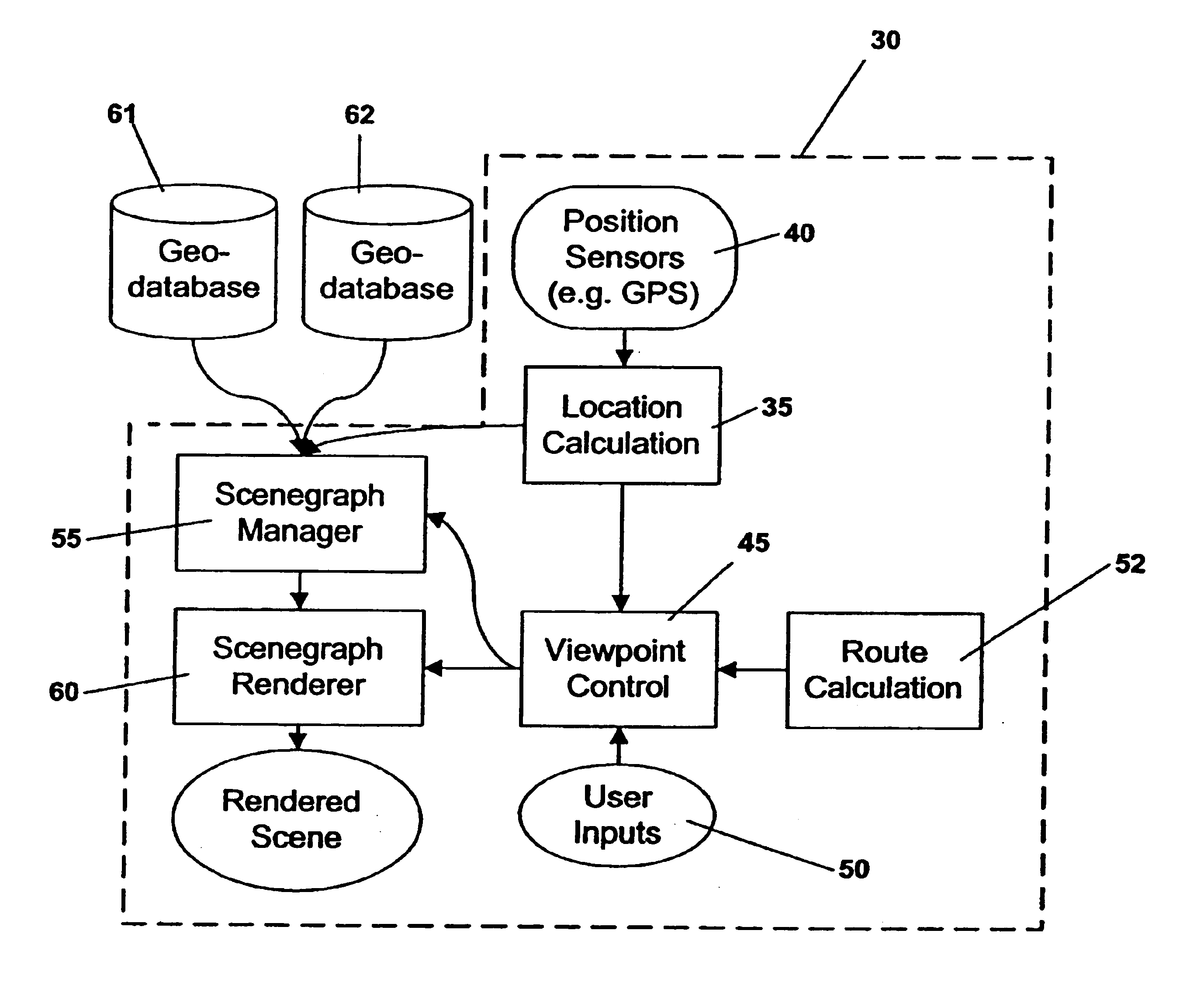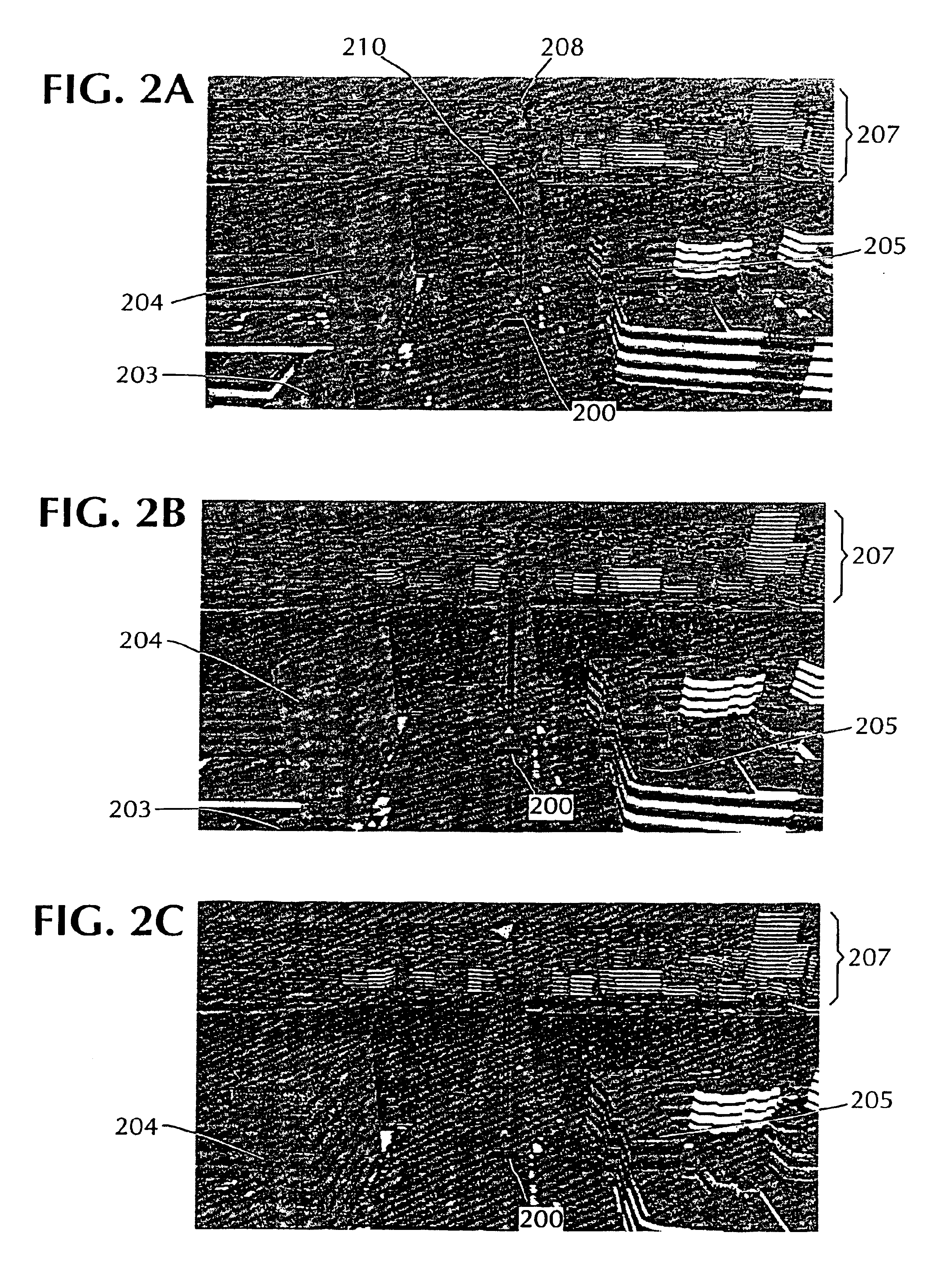System and method for advanced 3D visualization for mobile navigation units
a mobile navigation and advanced 3d visualization technology, applied in the field of visual navigation systems, can solve the problems of not providing route guidance applications for navigational assistance, using rendering software, and affecting the accuracy of navigational visualization, so as to improve the efficiency of navigational visualization, reduce unevenness and abrupt changes, and enhance the realism of the depiction
- Summary
- Abstract
- Description
- Claims
- Application Information
AI Technical Summary
Benefits of technology
Problems solved by technology
Method used
Image
Examples
Embodiment Construction
[0028]A system in accordance with the present invention generates a sequence of three-dimensional graphic visualizations, from an arbitrary viewpoint, of geographic areas for mobile navigation, orientation and reference. The graphic visualizations, or renderings, can contain representations of any type of data object for which local geographic information is available. Such data may include (without limitation) satellite, aerial, or ground view images, digital road maps, geometric models of buildings, textural descriptions of landscapes, and any kind of identification information that describes features or buildings in the depicted environment such as gas stations and hotels, or dynamic data, such as traffic information, weather conditions, and time of day (lighting).
[0029]FIG. 1a and FIG. 1b illustrate how the informational parameters used to render the local environment change with the viewpoint (orientation) of the observer. In FIG. 1a, an observer 5 oriented “north” has a two-di...
PUM
 Login to View More
Login to View More Abstract
Description
Claims
Application Information
 Login to View More
Login to View More - R&D
- Intellectual Property
- Life Sciences
- Materials
- Tech Scout
- Unparalleled Data Quality
- Higher Quality Content
- 60% Fewer Hallucinations
Browse by: Latest US Patents, China's latest patents, Technical Efficacy Thesaurus, Application Domain, Technology Topic, Popular Technical Reports.
© 2025 PatSnap. All rights reserved.Legal|Privacy policy|Modern Slavery Act Transparency Statement|Sitemap|About US| Contact US: help@patsnap.com



